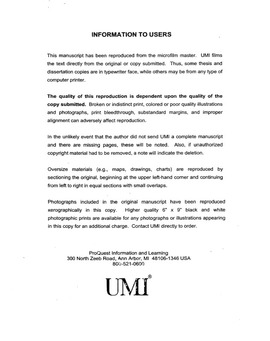| dc.contributor.advisor | London, David, | en_US |
| dc.contributor.author | Evensen, Joseph M. | en_US |
| dc.date.accessioned | 2013-08-16T12:18:19Z | |
| dc.date.available | 2013-08-16T12:18:19Z | |
| dc.date.issued | 2001 | en_US |
| dc.identifier.uri | https://hdl.handle.net/11244/344 | |
| dc.description.abstract | 1. An investigation of cordierite-beryl equilibria in hydrous granitic melts using forward- and reversed-direction experiments from 675 to 900° C at 200 MPa (PH2O) has revealed the elucidate limits and mechanisms of solid solution among these phases. Beryllium-bearing cordierite (BeCrd) and beryl (Brl) coexist on a solvus that extends from ∼ 675° C (the lowest temperature investigated) to beyond 900° C. | en_US |
| dc.description.abstract | 2. We have experimentally assessed the kinetics of crystallization as a combined function of (1) starting state, (2) single step superheating, (3) single-step undercooling, and (4) time. | en_US |
| dc.description.abstract | For undercooled silicic melts, the starting medium influences the rate and mechanisms of crystallization in three ways: (1) nucleation lag times are longest for the least physically disrupted nuclei-free melt (at the preconditioning step), (2) total solidification is fastest for the least physically disrupted nuclei-free melt (at the preconditioning step), and (3) the spatial advance of crystallization is different for melts that lacked critical nuclei upon undercooling (crystallization as 2-D fronts) versus those that contained silicate nuclei upon undercooling (crystallization as 3-D networks). (Abstract shortened by UMI.) | en_US |
| dc.description.abstract | Experimental analysis at the P-T conditions of the shallow crust is used to evaluate (1) the beryllium budget of granitic melts and (2) the kinetics and mechanisms of crystallization in hydrous haplogranite melt. The first study utilizes mineral-melt partitioning behavior, relevant crystal-chemistry and stability relations, and reported compositions to assess Be geochemistry from low to high activities of Be in melt. The latter study examines the differences in solidification from melt as multivariable functions of starting state, superheating, undercooling, and time. | en_US |
| dc.description.abstract | In order to evaluate the trace element signature that cordierite imparts to silicic magmas, we have performed experiments on cordierite-bearing peraluminous granitic melts at 200 MPa (PH2O), and from 700 to 850° C in forward and reversed direction using metapelitic mineral mixtures. | en_US |
| dc.description.abstract | Nucleation lag times vary with starting state and increase with superheating T, but decrease with undercooling. Statistical image processing of thousands of crystals provided quantitative textural measures of run products. In melts containing residual subcritical nuclei, correlations of crystal geometries (via crystal area, perimeter, length, width, diameter aspect ratio, solidity, convexity and roundness) are seen with the magnitude of undercooling, the duration of undercooling, and the combination, DeltaT*t. | en_US |
| dc.format.extent | xxiii, 293 leaves : | en_US |
| dc.subject | Geology. | en_US |
| dc.subject | Cordierite. | en_US |
| dc.subject | Beryllium. | en_US |
| dc.subject | Cyclostratigraphy. | en_US |
| dc.subject | Mineralogy. | en_US |
| dc.subject | Crystallization. | en_US |
| dc.title | The geochemical budget of beryllium in silicic melts and superliquidus, subliquidus, and starting state effects on the kinetics of crystallization in hydrous haplogranite melts. | en_US |
| dc.type | Thesis | en_US |
| dc.thesis.degree | Ph.D. | en_US |
| dc.thesis.degreeDiscipline | Conoco Phillips School of Geology and Geophysics | en_US |
| dc.note | Source: Dissertation Abstracts International, Volume: 62-05, Section: B, page: 2223. | en_US |
| dc.note | Adviser: David London. | en_US |
| ou.identifier | (UMI)AAI3014523 | en_US |
| ou.group | Mewbourne College of Earth and Energy::Conoco Phillips School of Geology and Geophysics | |
